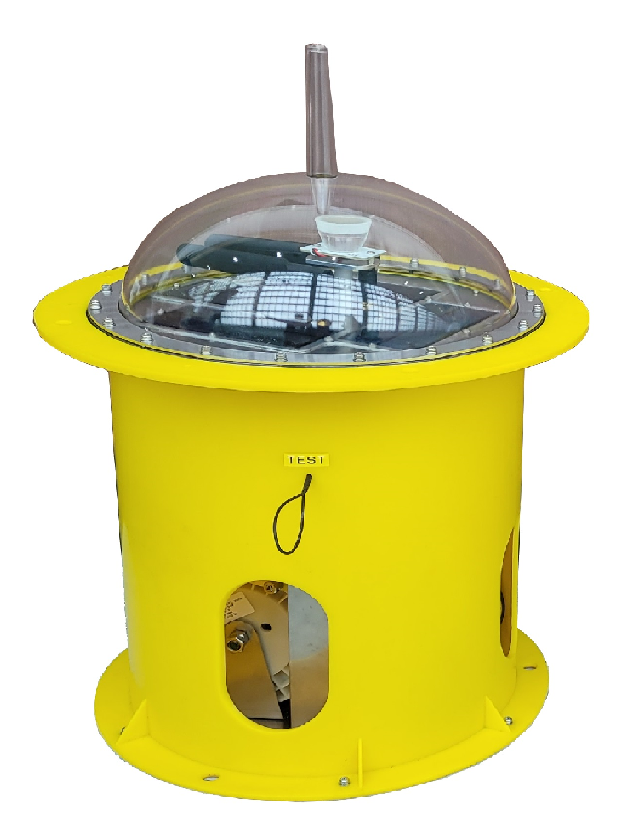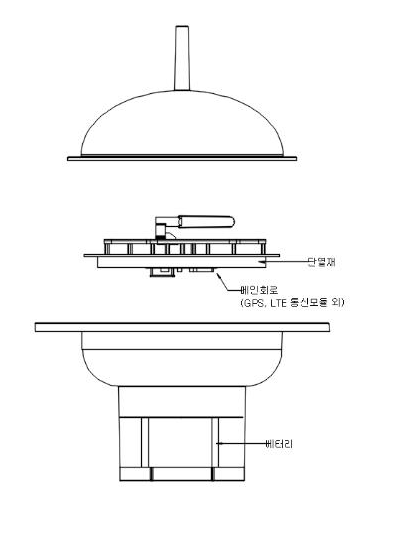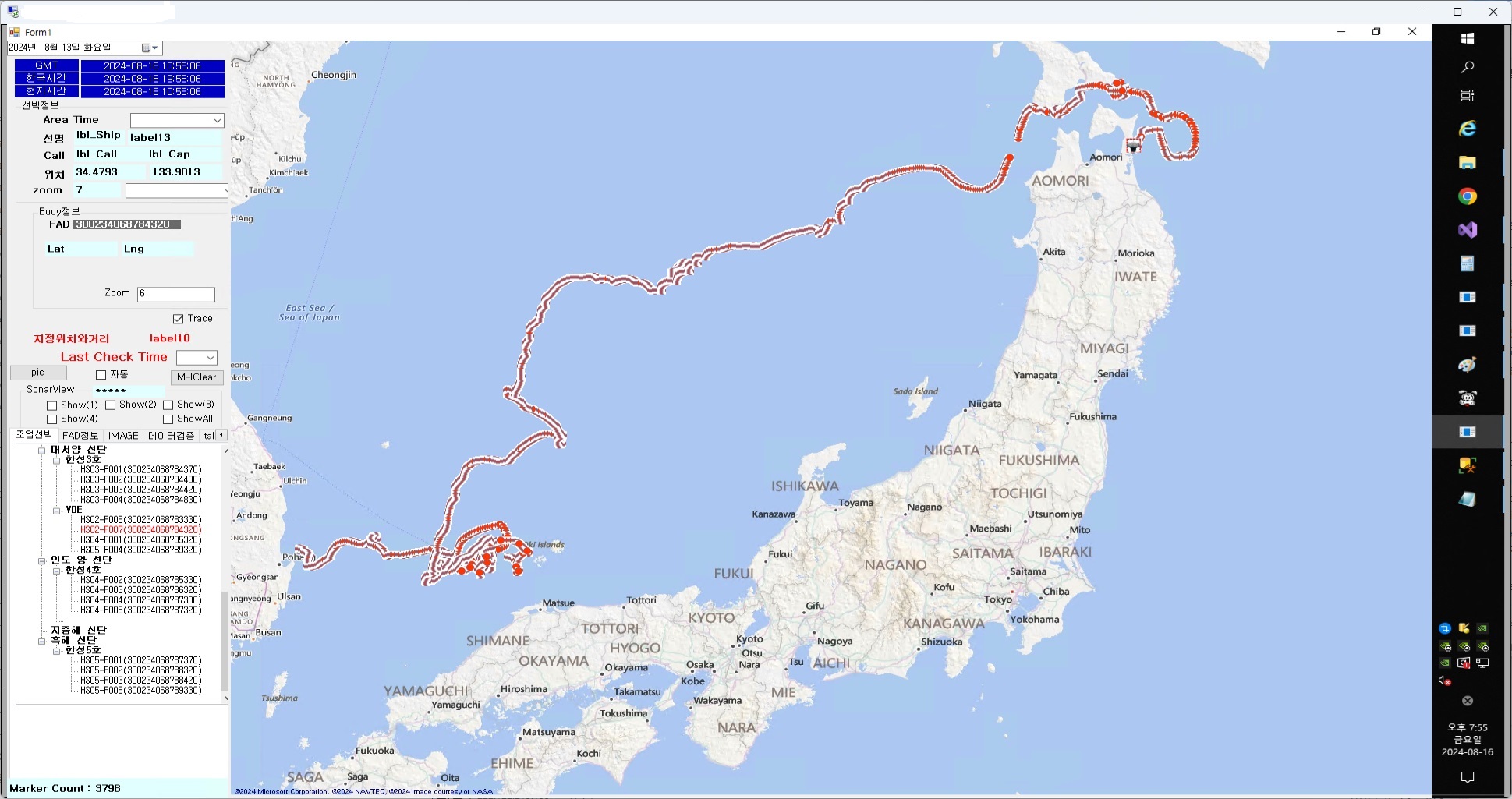EPIRB
EPIRB는 EMERGENCY POSITION INDICATING RADIO BEACON의 약자로 조난,침몰, 위급 상황시 수색과 구조를 용이하게 할 수 있도록 도와주는 무선 통신 장비입니다.
SART와 비교 하는 경우가있지만 SART는 RADAR에표시되지만 언제부터 발신된 신호인도 모르고 단순하게신호만 수신되는 설비 이며 이 또한 10마일 거리부터 탐지.
가능, EPIRB는 위성을 이용하여 어디에 있든 탐지 가능하다는 점입니다.
국가 영내일 경우 LTE 통신을 사용하기에 통신비 부담및 지역 GROUP화가 가능하기에 신속한인명구조및 재산을 보호할수 있습니다. .
그리고 신호를 보낼 때 선명, 선사, MMSI, 시간, 위치 번호 등의 정보를 전송하기 때문에 어느 선박이 조난을 당했는지 알 수 있습니다.
주변 선박에게 신호를 송출하여 긴급처리가가능합니다.
선박에서 사용하는 EPIRB는 COSPAS-SARSAT용 EPIRB와 INMARSAT EPIRB(1.6GHz)가 있습니다. INMARSAT EPIRB는 북위, 남위 70도 이상인 지역은 사용 불가하며
가격이 비싸기 때문에 배에서 잘 사용하지 않습니다.
그러나 당사의 EPIRB는 IRIDIUM위성을 이용하여 남극에서 북극까지 신호 송출이 가능하며 저렴한 제품입니다. ( 통신비제외)
COSPAS-SARSAT EPIRB을 대체할 차세대 제품으로 가성비가 최고인 제품입니다.
선박의 침몰시 수압 3m 이상 잠기면 자동으로 부이가 이탈하여 신호를 방출하기 시작하며, 30초 이내에 신호를 송출 합니다.
선박이 침몰하였을 경우 바다속에는 해류가 존재하여, 침몰위치에 선박이 존재할 가능성은 0%에 가깝습니다. 우리는 바다깊이에따라 200m 500m 1,000m 2,000m 선박이 운항하는 항로의 가장 깊은
거리를 참고하여 wire를 장착 buoy와 선박에 연결 되어 있어, 선박이 해류에 떠내려가도 epirb도 같이 따라가면서 위치를 송출 합니다.
또한 위급상황(해적, 파도등으로 위급상황시, switch를 on 하거나,또는 강제로 이탈 시켜 작동을 시킬수도 있습니다.
야간 수색에 도음을 주기위해 LED 청색/ 황색을 1초 1섬광으로 발광하여 야간수색에 도움을 준다. 렌즈로 인하여 시인성도 높혔다.
Sometimes compared to SART, SART is displayed on RADAR, but it is a facility that simply receives signals without knowing when the signal was transmitted, and this can also be detected from a distance of 10 miles. EPIRB can be detected anywhere using satellites.
If it is within the national territory, it can be used to use LTE communication, so communication costs are burdened and regional grouping is possible, so it can quickly rescue people and protect property.
And when sending a signal, it transmits information such as ship name, ship number, MMSI, time, and location number, so you can know which ship is in distress.
It is possible to send a signal to nearby ships and handle it urgently.
There are EPIRBs used on ships, such as COSPAS-SARSAT EPIRB and INMARSAT EPIRB (1.6GHz). INMARSAT EPIRB cannot be used in areas over 70 degrees north and south latitude, and
It is not commonly used on ships because it is expensive.
However, our EPIRB can transmit signals from the South Pole to the North Pole using the IRIDIUM satellite, and is an inexpensive product in the $40,000 range. (Excluding communication costs)
It is a next-generation product that will replace COSPAS-SARSAT EPIRB and is the most cost-effective product.
When a ship sinks, the buoy automatically detaches and starts emitting signals when the water pressure exceeds 3m, and the signal is transmitted within 30 seconds.
If a ship sinks, there is an ocean current in the sea, so the possibility of a ship being at the sinking location is close to 0%. We are connected to the buoy and the ship by referring to the deepest distance of the route that ships operate, 200m 500m 1,000m 2,000m depending on the depth of the sea, so that even if the ship is drifted by the current, the epirb follows and transmits the location.
Also, in an emergency situation (pirates, waves, etc.), you can turn on the switch or force it to detach to operate it.
To help with nighttime search, the LED blue/yellow flashes once per second to help with nighttime search. Visibility is also improved due to the lens.
It is completely waterproof and can continue to operate for about a week.


| Applicable Materials | Test Items | |
(Remarks) |
||
| Finished Product (All Models) | Ozone Resistance | No cracks should occur. | In-house performance standards
(Refer to 6.2.1) |
||
| UV Blocking Rate | 315~400 nm |
95% or higher. | KS K 0850 | ||
| 290~315 nm | 95% or higher. | ||||
| Luminance Measurement (Maximum Value) | 25cd or higher | In-house performance standards
(Refer to 6.2.2) |
|||
| Flashing Test | Yellow Light On Time |
Within 1초±5% |
In-house performance standards (Refer to 6.2.3) |
||
Yellow Light Off Time |
Within 0.5초±5% |
||||
|
Green Light On Time |
Within 1.초±5% |
||||
|
Green Light Off Time |
Within 0.5초±5% |
||||
|
Waterproof and Dustproof |
IP68 |
KS C IEC 60529 |
|||
|
Vibration Test |
No external damage |
MIL-STD-202G Method 204D |
|||
|
Operates normally |
|||||
| Shock Test |
No external damage |
>MIL-STD-202G Method 213B | |||
Operates normally |
|||||
|
Uncharged Operation Time |
Operates normally for 150 hours. |
In-house performance standards (Refer to 6.2.4) |
|||
|
Floating Time of the Automatic Position Indicating Device for Sinking Ships |
Within 10 seconds |
In-house performance standards
(Refer to 6.2.5) |
|||
|
Capsize Detachment of the Automatic Position Indicating Device for Sinking Ships |
No detachment. |
In-house performance standards (Refer to 6.2.6) |
|||
|
AIS/LTE/Iridium Signal Reception Time of the Automatic Position Indicating Device for Sinking Ships |
Within 3 minutes |
In-house performance standards (Refer to 6.2.7) |
|||
|
AIS/LTE/Iridium Signal Position Accuracy of the Automatic Position Indicating Device for Sinking Ships |
Within 20m error |
In-house performance standards (Refer to 6.2.8) |
|||
|
Looseness Check |
No issues. |
In-house performance standards (Refer to 6.2.9) |
|||
|
Number of Specified Receivable Numbers |
10 or more |
In-house performance standards (Refer to 6.2.10) |
|||
|
Specified Receiver's Reception Success Rate |
95% or higher |
In-house performance standards (Refer to 6.2.11) |
|||
|
Finished Product (SOS.Ship (Iridium)) |
Iridium Message Transmission/Reception Rate |
95% or higher |
In-house performance standards (Refer to 6.2.13) |
||
|
Finished Product (SOS.Ship(LTE)) |
LTE Message Transmission/Reception Rate |
95% or higher |
In-house performance standards (Refer to 6.2.14) |
||
6.2.10 Test Method for Number of Specified Receivable Numbers
1) Sequentially specify 5, 10, and more than 20 arbitrary phone numbers using a PC or APP.
2) Supply power using the tester method and automatically send accident messages to the specified phone numbers.
3) Capture the received messages and send them to the testing agency.
4) Verify the number of specified phone numbers by checking the transmitted received messages.
6.2.11 Test Method for Specified Receiver's Reception Success Rate
1) Send messages to the specified phone numbers 10 times at 1-minute intervals.
2) Supply power using the tester method and verify the number of received messages at the specified phone numbers.
3) Capture the received messages and send them to the testing agency.
4) Verify the ratio of transmitted messages to received messages by checking the specified phone numbers and the received messages.
